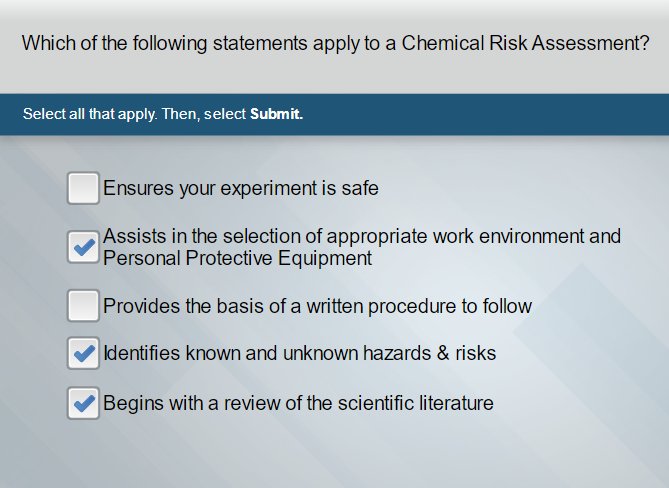Key Considerations When Assessing Risk: The Following Should Be Considered

When assessing risk, we must prioritize understanding the potential threats and vulnerabilities in any given situation. Identifying these key elements will enable us to develop effective risk management strategies. Factors such as the likelihood of an event occurring and the impact it could have should be carefully evaluated. By considering the following should be considered when assessing risk, we can make informed decisions to mitigate potential harm and ensure the safety and security of individuals and organizations.
The Following Should Be Considered When Assessing Risk
Understanding Risk Assessment
When it comes to making decisions, whether big or small, understanding the concept of risk assessment is crucial. Risk assessment is like being a detective – you have to gather clues, analyze potential outcomes, and make an educated guess on what might happen next. In simpler terms, risk assessment helps us predict the chances of something going wrong so we can plan ahead and prevent disasters.
What Is Risk?
Risk is basically the possibility of something bad happening. Imagine you’re getting ready to ride your bike without wearing a helmet. The risk here is that you might fall and hurt yourself because you don’t have the helmet to protect your head. So, when we talk about assessing risk, we are trying to figure out how likely it is for something negative to occur.
Why Is Risk Assessment Important?
Risk assessment is important because it helps us make smart choices. Let’s say you want to go swimming in a river. Before jumping in, you need to think about the risks involved. Is the water deep? Are there strong currents? By assessing these risks, you can decide if it’s safe to swim or if you should look for a safer spot.
Factors to Consider in Risk Assessment
1. Identify Potential Risks
The first step in assessing risk is to identify all possible risks. Think of it as making a list of things that could go wrong. For instance, if you’re planning a picnic, potential risks could include rain, insect bites, or forgetting to bring food. By identifying these risks, you can prepare for them in advance.
2. Evaluate the Likelihood of Risks
Once you’ve identified the risks, the next step is to evaluate how likely they are to happen. Some risks, like getting a sunburn during a picnic on a hot day, may be more common than others, such as encountering a bear in the woods. By assessing the likelihood of each risk, you can prioritize which ones to focus on.
3. Assess the Impact of Risks
After determining the likelihood of risks, it’s essential to consider the impact they could have. Think about how severe the consequences would be if a risk were to occur. For example, the impact of forgetting to bring sunscreen to the picnic might be a mild sunburn, while the impact of encountering a bear could be life-threatening. Understanding the potential impact helps you prepare for the worst-case scenarios.
4. Risk Mitigation Strategies
Once you’ve identified, evaluated, and assessed the risks, it’s time to come up with strategies to mitigate or reduce them. This could involve taking preventive measures, such as wearing sunscreen to avoid sunburn or carrying bear spray when hiking in bear country. By having mitigation strategies in place, you can minimize the chances of negative outcomes.
Examples of Risk Assessment in Everyday Life
1. Crossing the Street
Even something as simple as crossing the street involves risk assessment. Before stepping onto the road, you look both ways to check for oncoming cars. By assessing the risk of getting hit by a vehicle and taking precautionary measures like looking out for traffic signals, you ensure your safety.
2. Cooking a Meal
When cooking a meal, you assess risks like cutting yourself with a knife or burning your hand on a hot stove. By using tools safely, paying attention to cooking temperatures, and following recipes carefully, you reduce the chances of accidents in the kitchen.
3. Planning a Vacation
Planning a vacation also requires risk assessment. You consider factors like weather conditions, travel safety, and health risks at your destination. By researching, purchasing travel insurance, and packing essentials, you prepare for unforeseen events that could disrupt your trip.
In conclusion, risk assessment is a valuable skill that helps us navigate life’s uncertainties. By understanding, identifying, evaluating, and mitigating risks, we can make informed decisions and protect ourselves and others from potential harm. Whether it’s crossing the street, cooking a meal, or planning a vacation, assessing risks allows us to anticipate challenges and take proactive steps to stay safe. Remember, when in doubt, always think about the risks and plan accordingly!
Assessing Risk: Start to Safe Finish
Frequently Asked Questions
What factors should be considered when assessing risk?
When assessing risk, it is crucial to consider various factors such as the potential impact of the risk on the organization, the likelihood of the risk occurring, the effectiveness of current risk mitigation strategies, and the overall risk tolerance of the organization. It is important to take into account both internal and external factors that can influence the risk landscape of the organization.
How does the potential impact of a risk affect the assessment process?
The potential impact of a risk plays a significant role in the assessment process as it helps in determining the severity of the consequences if the risk materializes. Risks with high potential impact may require more attention and resources in terms of mitigation strategies compared to risks with lower potential impact. Understanding the potential impact also aids in prioritizing risks based on their potential harm to the organization.
Why is it important to assess the likelihood of a risk occurrence?
Assessing the likelihood of a risk occurring is essential in risk assessment as it helps in understanding the probability of the risk materializing. By evaluating the likelihood, organizations can focus their efforts on risks that are more probable and prioritize mitigation efforts accordingly. This information enables organizations to allocate resources effectively and proactively address potential threats.
Final Thoughts
When assessing risk, it is crucial to consider factors such as the probability of an event occurring and the potential impact it may have. Understanding the existing controls and mitigation strategies is essential for accurate risk assessment. Additionally, evaluating the effectiveness of risk management processes helps in making informed decisions. In conclusion, the following should be considered when assessing risk to ensure a comprehensive evaluation and proactive risk mitigation approach.







